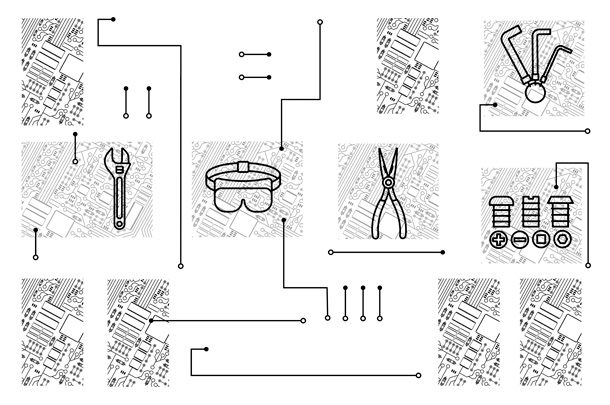Editor’s note: This article is the second in a four-part series about how an Oregon dairy farmer is making robots work on a grazing system. Read the three other articles Keeping milk-quality forage coming throughout your harvest season, Free-flow grazing with milking robots promotes animal wellness and How we milk 3 times a day with robots for success.
Million-dollar automated milking systems break and need repairs. They’re complicated. Diagnosing what’s wrong when they go down is hard. But learning to diagnose the cause can be even harder. It’s a problem.
When we bought our first robot in 2017, we installed it and watched the robot go down 108 times in the first month.
Twelve months later, annual reports showed a six-figure number for repairs and maintenance for one robot, two guided-flow gates and alley scrapers. My repair skills were limited, and we were in trouble.
The hidden costs are even scarier. Milking robots are grain feeders that milk cows. We run a daily report that shows how many times cows milk, how much grain they eat and how much milk they produce. When milking frequency goes down, so does grain intake. Milk production follows.
And when the robot is down frequently, you’re trending the cows to slow down lactation. Go too long and that’s a permanent change until they calve again. We had an ice storm this winter. At 170 days in milk, power was out for 18 hours. But it was 40 hours before all the cows were milked again. It took a ration change and eight days’ work to get the cows back up to where they were producing before the storm. Thank God they did.
We tried to think ahead. Available service and support were key factors in our purchase decision. When we bought our first robot in 2017, our local vendor had 18 robots already installed and a team of technicians to work on them. Today, there are 47 robots like ours within six hours of our farm. And the technician team is getting stretched thin.
There’s a senior robot technician who knows a lot, but he’s also leading installations. This year, one of our robots was exhibiting sporadic stop milking symptoms for 10 days without diagnosis. We and the technicians were all trying and fumbling. When the senior guy was finally available, a diagnosis was made and a cure wrenched in.
We’re in Oregon, and I realize I’m writing for a national publication. Wanting to make sure this article was credible, I spoke with a farmer who bought the first two robots in Idaho six years ago. They have a different brand than we do. They’re in a different region than we are. And their experience is strikingly similar.
“When we first had robots, the techs would be on the phone trying to get help, and we’d always replace expensive things … that x drive is out, this z board … but it was never that. It would end up being a cheese block somewhere,” he said.
He agreed that diagnosis is tough. “What you see is the last error that trips. There’s a whole series of dominoes that trip before that … and it’s hard to train for that. There were times we had a tech here for eight hours trying to figure it out.”
He added, “We trained two dealerships … experience is expensive. My herdsman and I are pretty good robot techs now.” But that took years to earn.
While I can’t be sure this is the case across the country, I’ve spoken with some dealers in other regions, and they describe a similar circumstance. A common theme I heard was: “There’s a high demand for robots and a low availability of trained technicians.”
Something has to change. Dairies close when robot systems fail to meet their goals. A farmer shared, “We were almost kicked off the truck at one point for milk quality because our wash kept failing and they couldn’t get it fixed.” There are lawsuits and lawyers advertising in dairy publications for farmers to participate in class action suits against robot manufacturers.
I want to be clear that I’m not criticizing the robots or the technicians. The robots offer some great advantages. But while they milk cows 24/7, they can also go down 24/7.
The technicians are trying. When we need help at 2 a.m. Sunday morning, the guys are there. Willingly. They’re equipped and working hard to figure it out. But diagnosing what’s broken is hard. Most times, it takes more than one farm call here. Milking parlors have been around for decades. The senior parlor technicians know how to fix them quickly and efficiently. And even those experts struggle when finding what’s wrong with a robotic milking system.
It’s multiple computers, vacuum systems, air systems, water systems, chemical systems, mechanical systems, electronic systems all working in unison 24/7 in a caustic, must-do environment. What do you do when a sensor goes out? Which one is it? What’s a sensor? How do I wire it into that computer board?
As a dairy farmer, it can be overwhelming when the robot goes down at midnight for the fourth time this week – and you’re not sure what’s causing it but you know your cows need to be milking.
How do we shorten this path to know-how for farmers and technicians?
“My tractor came with a step-by-step repair manual, why not my robots?” said the farmer from Idaho. “If I had a three-ring binder that showed me the parts and steps, I’d use it.”
We looked into training courses, but aside from a manufacturer’s intro class halfway across the country that runs a few times a year, there’s nothing at hand. Our friend added, “We didn’t go to the course our brand [sic] offered either; by the time it was available, we already knew those basic things.”
You have to get creative. In 2020, when we bought our second robot, we had them label everything in the robot and throw in three years of 24/7 phone support. Now when we’re on the phone, “good milk valve” means something.
“A young guy not afraid of tech, who rolls up his sleeves and pulls it apart is what you need,” said the farmer from Idaho.
I agree. A dairy farming friend near us has robots and does a great job of doing his own maintenance and most repairs. He told me, “Get in there; get your hands dirty. Try to trace things down as the system milks a cow. Learn what the system does and how it does it before there’s a problem.” Good advice. Do it regularly just like practicing shooting baskets so that, come game time, you can score.
As more systems get installed, more problems will arise. As more problems arise and get resolved, more know-how is developed. But if it all relies on a few technicians who become experts, and the information isn’t available to farmers or another technician if the expert goes away – well, we’re back at square one.
The sustainable solution for technician and farmer training is sharing information by creating a process that facilitates intake, standardization, distribution and utilization of the steps needed to fix problems that arise with robots.
In each region, the field technicians could share the problems they encounter and resolve with their lead technician. Symptoms, diagnosis and how to cure it. That lead technician could share that information with corporate through a standard portal. Corporate could share that standardized solution with a lead trainer in each region. The trainer could train the technicians and offer paid classes for farmers.
From that, we can get an evolving step-by-step repair guide that each robot ships with, and local regular training classes we can pay to attend.
Farmers are jumping on board with robots. Labor is getting really hard to find. And the promise of flexibility for yourself, family and cows seems like the way to keep your farm from closing. But without knowing how to repair robots when they go down, or how to keep costs of ownership and operation lower, dairy farmers might be jumping from the pan to the fire.






